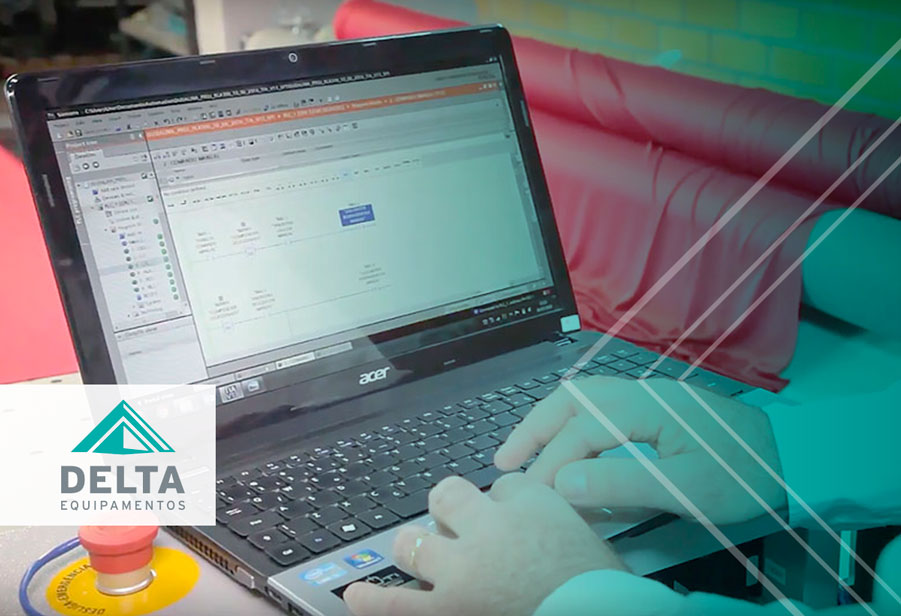Collecting and analyzing data is essential for quality management. The lack of use of concrete information can bring losses to the textile industries, since, by using data for management, it is possible to detect problems and even prevent them from occurring.
Furthermore, only with this collection is it possible to make decisions without guesswork and ensure an agile and accurate process.
So that you better understand the advantages of adopting this form of management, we have separated 5 benefits it provides for quality control. Check it out!
1 – Avoid a drop in quality
The quality of raw materials is one of the most important factors in manufacturing good products in the textile industry.
Often, believing that it’s possible to use a cheaper roll of fabric and produce the same quantity of items as with the more expensive one, the manufacturer can end up sacrificing quality.
For this reason, when purchasing fabric rolls, besides checking the quantity, it’s important to inspect characteristics such as metrological regularity (width and size), as well as to check for defects in the fabrics, assess the compromise of the usable area, and analyze the quality standards of each roll.
Manually, these processes can be time-consuming, but by using technological machines—such as a Fabric Inspection Machine and a Digital Ruler Sensor, for example—alongside an ERP system (Enterprise Resource Planning), it’s possible to analyze this data and record it in a defect map.
Then, the report is input into the system, facilitating the classification and defect analysis of the rolls. This makes it much simpler to avoid pulling the roll from the spread due to manufacturing defects and size variations.
+Learn more: Excess demand: How to maintain textile productivity?
+Learn more: Second quality: 5 tips to avoid it in your production
2 – Cost reduction
Quality control, as discussed in the previous topic, directly affects the quantity of fabric used. This is because, when acquiring low-quality fabrics, there may be a shortage of fabrics during cutting due to excessive holes and defects.
By using more fabric than necessary, the ROI (Return on Investment) decreases, often without management realizing it.

Furthermore, by collecting data and analyzing it, it is possible to identify which supplier is the cheapest, based on the final cost of a product. Such actions can represent a significant cost reduction for the production process.
+Learn more: Advanced manufacturing: what it is and who is already using it
3 – Production and demand control
Not all factories have control of information regarding their production capacity. In practice, this means that it is not known how many rolls are used to produce a given quantity of parts.
This is one of the problems that hinder the growth of the textile industry, as, without this data, it is not possible to calculate important information, such as the quantity of mesh that must be purchased.
By collecting data and storing it in a system, it is possible to improve the management of the purchasing sector, which can prepare a study on seasonality and forecast sales, purchasing fabrics according to output in each period.

Controlling demand and stock through data can also show which products bring the best return according to information such as stock turnover, customer habits and even the method used by the seller.
+Learn more: What is quality control? How does it work in the textile industry?
+Learn more: Quality management: how to solve problems with RNC’s
4 – Waste reduction
Adopting Artificial Intelligence (AI) in production processes makes it possible to obtain information such as width, useful area, weight, yield and meters of each roll of mesh or fabric in stock.
Thus, it is possible to select the best roll according to the use of each cutting order, increasing productivity and reducing waste in production.
+Learn more: How to modernize quality control in manufacturing?
+Learn more: Textile quality control and mesh preparation
5 – Optimized supplier management
Knowing which suppliers provide high quality products at good prices and always deliver as agreed would certainly help you choose which ones to continue doing business with or not, right?
With data collection this benefit is possible. Firstly because you will have access to quality reports, as mentioned before. You will also know where the meshes came from and exactly what problems were found.
Therefore, in addition to being able to request compensation or replacement and reach an agreement, it is also easier to check which suppliers to continue working with and which ones to replace if problems recur.

The benefits provided by data collection are already being enjoyed by companies in all sectors, as they have already realized the importance of properly managing their processes. To start investing in these changes and enter the era of industry 4.0, you will only need to purchase suitable machinery and train your employees to use it.
+Learn more: Mesh Preparation: Who is your cheapest supplier?
+Learn more: Advanced manufacturing in the Textile Industry. Quality control in the era of Industry 4.0
Delta’s equipment was designed precisely for this process. Check out the available products and discover how they can help modernize your production!


